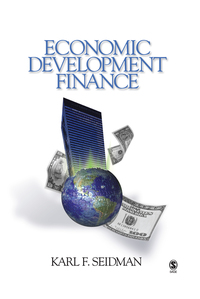



INVESTMENT ACCOUNTING Equity Method with OCI & Investment > Book Value Exercise A3-1 On January 1, 2013, Petulant, Inc. purchased 70 percent of the common stock of Sycophant Corp. for $458,920. On January 1, 2013, the book value of Sycophant's net assets equaled $478,000. On the date of acquisition, all of Sycophants net assets had recorded book values that approximated fair value, except for property and equipment that was undervalued by $57,600 and patents that were undervalued by $120,000. On January 1, 2013, the property and equipment had a six year remaining useful life and the patents had a five year remaining useful life. Neither company owns any other equity investments. Sycophant's balance sheets and statements of comprehensive income for the three year's ending December 31, 2015 follow: Sycophant's Balance Sheet: (at December 31, each year) 2013 2014 2015 Current assets 285,470 207,000 277,700 Tangible fixed assets 581,000 639,100 703,010 55,000 Intangible assets 50,000 60,500 Total Assets 838,000 971,800 1,048,980 Current liabilities 110,000 100,000 121,000 220,000 Noncurrent liabilities 242,000 266,200 100,000 100,000 Common stock 100,000 Additional paid-in capital 100,000 100,000 100,000 Retained earnings 345,000 300,000 400,000 AGGUM, other comp. income Stockholders' equity 61,780 18,000 74,800 518,000 619,800 661,780 971,800 1,048,980 Total Liabilities and Equity 838,000 INVESTMENT AccOUNTING Equity Method with OCI & Investment > Book Value Exercise A3-1 (continued) Svcophant's Statements of Comprehensive Income (For the years ended December 31) 2014 55,000 56,800 111.800 2013 40,000 10,000 50.000 2015 Net income Other comprehensive income 65,000 (13,020) 51.980 Comprehensive Income Other Information: Sycophant paid $10,000 per year in dividends during each of the five years ending December 31, 2015. The 70% Acquisition Accounting Premium (AAP) (i.e., for the 70% portion owned by Petulant) amortization schedule for the Investment in Sycophant is as follows: Initial Amortized in 2013 6,720 16,800 23.520 Amortized in 2014 6,720 16,800 23.520 Amortized in 2015 6,720 16,800 23.520 Account - Dr.(Cr.) Assignment 40,320 84,000 124.320 Property and equipment Patents Total AAP The unamortized balances of the 70% AAP are as follows Acquisition Date Dec.31, Dec.31, 2013 Dec.31, 2015 Dr.(Cr.) 2014 124 320 77 280 53. 760 100 800 Unamortized AAP halance INVESTMENT ACCOUNTING Equity Method with OCI & Investment > Book Value Exercise A3-1 (continued) 1. Determine the "Investment in Sycophant" balance at December 31, 2013 by accounting for the equity method adjustments in the following investment T-account. Investment in Sycophant Jan. 1, 2013 Balance Dec. 31, 2013 Balance 2. For each adjustment in the T-account, above, determine the account and financial statement affected by the "other side" of the adjustment. For example, if the adjustment to the investment account is a debit, where does the credit go? 3. Determine the effect of the "Investment in Sycophant" on the reported net income of Petulant during the year ended December 31, 2013 4. Determine the effect of the "Investment in Sycophant" on the reported comprehensive income of Petulant during the year ended December 31, 2013 5. Without using a T-account or journal entries, determine the "Investment in Sycophant" balance at December 31, 2015. 6. For this question only, assume that Petulant uses the "Cost Method" for its "Investment in Sycophant." Determine the investment balance at December 31, 2015










